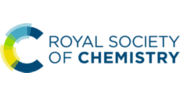The DASp – German Working group for Applied Spectroscopy – regularly awards the “Bunsen-Kirchhoff-Preis für analytische Spektroskopie” to honour preferably the work of young scientists from universities, research institutes or industry who made excellent contributions to analytical spectroscopy. Especially preferred is an oeuvre in new areas like spectroscopy in nano compartments, and spectroscopy of biomolecules. The Award consists of an award-document and an amount of € 2.500,00 sponsored by Perkin Elmer GmbH and the DASp seeks nominations for the 2012 Bunsen-Kirchhoff Award for Analytical Spectroscopy. The Award will be presented at the Analytica Conference in April 2012 in Munich (Germany).
A nomination should include:
1. letter with the candidate´s accomplishments
2. list of publications or recent work,
3. scientific curriculum vitae stating the age of the candidate; the candidate´s address, phone fax and e-mail.
Nominations can be made by members of DASp but eligibility is open for any scientist meeting the requirements. Self-nomination is excluded. The decision as to whom the prize is to be awarded shall be made by a jury consisting of the current members of the board of DASp.
Further information is available here.
All documents should be sent no later than 31 December 2011 to:
Prof. Dr. Detlef Günther, President of the Jury for the Bunsen-Kirchhoff Award 2012, Laboratorium für Anorganische Chemie, ETH Hönggerberg, HCI, CH-8093 Zürich (Schweiz)














![anakon_2011-50_js[1]](https://blogs.rsc.org/ja/files/2011/03/anakon_2011-50_js1-300x220.jpg)
